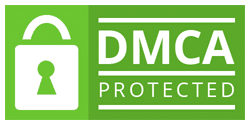8178
ICT700
System Analysis and Design
Task 2
Semester 1, 2016
Assessment and Submission Details
Marks: 35 % of the Total Assessment for the Course
Due Date: 5:00pm Monday, Week 12
Assignments are to be submitted by SafeAssign.
DO NOT SUBMIT THE ASSIGNMENT TO THE
COURSE CO-ORDINATOR OR TUTOR.
The assignment will be marked out of a total of 100 marks. Once marked, ALL assignments will be checked for plagiarism and/or collusion between individuals.
Refer to your Course Outline or the Course Web Site for a copy of the “Student Misconduct, Plagiarism and Collusion” guidelines.
Note: Each student MUST be able to produce a copy of their assignment and this copy MUST be produced within 24 hours of it being requested by the Course Co-ordinator. Failure to produce the second copy of the assignment when requested may result in loss of marks or a fail grade for the assignment.
Requests for an extension to an assignment extension MUST be made prior to the date of submission and requests made on the day of submission or after the submission date will only be considered in exceptional circumstances. Please note because this assignment is due close to the examination period extensions will not be given without documented medical evidence of an inability to work.
Case Study: Acme Trading Place.
Background:
Acme Trading Place (ATP) is a business that is two years old and has brokers that buy and sell collectables such as stamps, coins and jewellery. They do this trading through portals such as Ebay and Greys Online and part of the brokers job is to choose the best portal for an item, the listing price and reserve in negotiation with the customer and the length of time the item would be listed for. They list the items for sale under their own name and they earn income by taking 20% of the sales price as a commission. Before an item is put up for sale the item is brought in by the customer and then ATP will post to the purchaser.
Currently they have five brokers who each store their own record of sales in their own way. Some brokers use spreadsheets, some a database and others pen and paper records. Each broker considers different data to be worth saving. The brokers have seen this data as an important asset which belongs to them and gives them a competitive advantage. They are paid a base salary, plus 5% of the sales price of the item.
ATP has been growing strongly and they are planning to hire five new full-time brokers. They are also investigating using part-time brokers who will work from home who will be supervised by a full-time broker and known as associate brokers.
ATP has become concerned that they are not gaining a benefit from the data generated from each sale and are beginning to recognize that the ability to aggregate and analyse all the item data would add value. The existing brokers are concerned about this idea as they see how they use their data as driving the commission they earn.
ATP gets its business in one of several ways: Customers respond to advertisements placed by ATP in specialist magazines and websites or customers contact ATP because of recommendations from past customers. ATP wants this information stored as part of the customer detail. More than one customer may own an item for instance an expensive coin may be owned by two or more people.
When customers initially make contact with ATP, they are asked to complete a questionnaire detailing their name, address, email and phone contact details. They also need to state their bank account details so that ATP can deposit the proceeds from the account. This account information will change from time to time.
Once the items have been deposited at ATP, they are photographed, logged and placed in ATP’s secure storage. The storage area is looked after by two staff and once an item is sold and paid for they pack and send the item. It is very important that the items are tracked accurately once they have been received and that the photographs and customer details are clearly associated with the item. Currently, a broker comes out to the counter to receive the item and negotiate with the seller about the selling price. This means that a broker is interrupted many times a day to go to the counter and receive items. Multiple items from one customer may be included in one listing.
Once an item is sold an email report is sent to the seller with details of the sale price. Once the item is paid for another email is sent to the seller to inform them. The buyer pays the purchase price for the item into a trust account run by ATP. Three working days after the item was paid for by the buyer, proceeds of the sale are paid to the seller. The trust account must be able to be balanced at any time. ATP want to retain for each sale, the broker, customer, item number, sale amount and purchaser details.
The owner of ATP Peter Smith wants to receive a standard sales report on volume of sales and commission earnt at the end of every month and be able to run this report for custom dates and for individual customers and brokers. They also want to include a provision for the customer to run monthly sales reports.
Peter Smith wants to take ATP to a bigger level by changing the following items.
• A sale item system which will gather all the data from the sales items, this data would then be used by all brokers to assist in negotiations with sellers. He also wants the brokers to gauge if data elements such as a type of item description or included postage would attract higher selling prices.
• A customer relationship management system which would allow ATP to offer selling offers to customers such as lower commission. Peter Smith, would also like to be able to track high value customers.
• To compensate the current brokers for the loss of the customer data, Peter Smith is proposing to have three levels of brokers.
o The current brokers to be termed Senior Brokers to be paid a standard salary plus 1% of the monthly sales commission value. This includes the commission earnt on all other brokers sales. The brokers are therefore not in competition with each other. These brokers will supervise the new brokers.
o New full-time brokers who will be paid a salary only. These brokers will be assigned to a senior broker for supervision.
o Associate brokers who will be paid 2% of the sales price of an item and will also be assigned to a senior broker for supervision. Associate brokers will nominate the number of items they wish to sell per week.
• The warehouse staff will now receive items for sale, with the brokers ringing the customer later to discuss the sale requirements. For returning customers, Peter Smith would like them to be able to complete a form which they could bring with their items with the receiving person just quickly checking. The idea is that this will decrease the time taken to drop off items. However, it must be noted if the customer has been contacted and the sale details arranged.
• Each of the different types of items will require different attributes to be listed, you may look at online auction sites to gain those attributes.
In your role as a Business Analyst you have been approached by Peter Smith as owner of ATP for guidance on evaluating and selecting a suitable information system solution for their business.
End of Case Study
Part A
Question 1: Report 20 marks
Your manager Peter Smith wants you to write a report detailing how you will gather the functional and non-functional requirements for the new ATP system.
The following sections need to be included;
o Stakeholders including justification of why they are a stakeholder.
o Information gathering techniques
o Include at least three techniques
o The objective of the information gathering technique
o What information you are looking for, what stakeholders you are targeting and how you are going to get the information
For example, for an interview you need to list;
a. The objective of the interview
b. The stakeholder you are interviewing and why.
c. The questions you will ask.
d. How these questions will fulfil the interview objective.
o List the different components of the new system and how you will deploy the system (direct, parallel or phased deployment) including justification for the deployment choice from the case study,
Your target audience is executive business people, who have extensive business experience but limited computing knowledge.
Your essay should be no less than one thousand (1000) words and it would be best to be no longer than one thousand five hundred (1500) words long. Appropriate referencing is required. The textbook Satzinger et. al is a valid resource, however it is expected that at least five (5) other resources will also be used.
Marking Criteria Maximum Marks Marks Obtained
ANSWERS Use of Report Format 2
Professional communication (correct spelling, grammar, formal business language used)
1
1. Stakeholders
3
2. Stakeholder justification
1
3. Information gathering technique 1
3
4. Information gathering technique 2
3
5. Information gathering technique 3
3
6. Components of new system
2
8. Deployment 2
Total (I) = 20 0
Question 2: Memo 20 marks
Review the ATP Limited case study and answer the following question with reference to the information in the case study.
Your manager has requested that you write a brief memorandum for the owner Peter Smith commenting on, two adaptive systems development, such as Scrum, XP and UP that you would use to develop this system. Briefly discuss the methodology and then state why you would recommend one methodology. It is expected that you use the detail from the case study in your essay and failure to do this will reduce your marks.
Your target audience is executive business people, who have extensive business experience but limited computing knowledge. Attach this memo to your report from question 1 as an appendix.
There is limited information available to you at this time but you are required to make reasonable assumptions based on the information that you have. Assumptions should be noted and specifically mentioned within your memo. Your memo should be no less than seven hundred and fifty (750) words and it would be best to be no longer than one thousand (1000) words long.
Marking Criteria Maximum Marks Marks Obtained
ANSWERS Use of Memo Format 1
Professional communication (correct spelling, grammar, formal business language used)
2
1. Description of adaptive methodology 1
6
2. Description of adaptive methodology 2
6
3. Recommendation – Theory applied to case study
5
Total (I) = 20 0
Part B
Modelling and Diagramming
Review the Acme Trading Place case study and answer the following questions with reference to the information in the case study.
Do NOT extend the scope for any of the following solutions beyond that specifically described in the case study above.
You are permitted to make reasonable assumptions where necessary but these should be noted.
It is recommended that you review all documentation for this case study before finalising any single solution. Ensure that the required consistency has been included within and between each question solution.
Question 3: Event Table 20 marks
Review the ATP Limited case study and prepare an event table for the information system to support the business processes as described. Use at least the following headings for the Event Table:
Event Event Type Trigger Source Activity/Use Case System Response/
Output Destination
20 18 15 13 10 5 0
Outstanding: High Distinction: Distinction: Credit: Pass: Fail: Not Submitted:
An outstanding attempt – well formatted and professionally presented piece of work. An excellent piece of work that meets all the specified criteria with very minor omissions or mistakes More than competently meets the criteria specified with only minor mistakes or omissions. Competently meets the criteria as specified with few minor mistakes or omissions. Satisfactorily meets the criteria. Did not sufficiently meet the criteria to pass. No attempt made or different from what is acceptable
Question 4: Domain Model Class Diagram 20 Marks
Review the ATP Limited case study to prepare a domain model class diagram for the supporting information system.
Solutions must follow the methodology as outlined within the Satzinger et al textbook. Solutions are expected to show:
• The class name and attributes list for each class and sub class as required
• All required associations
• All attributes as specifically mentioned in the case study must be reflected
• Other attributes as needed to support the described functionality.
It is not necessary to show methods, however you may include them if you wish. Solutions are expected to align with the components as shown in figure 4-21.
20 18 15 13 10 5 0
Outstanding: High Distinction: Distinction: Credit: Pass: Fail: Not Submitted:
An outstanding attempt – well formatted and professionally presented piece of work. An excellent piece of work that meets all the specified criteria with very minor omissions or mistakes More than competently meets the criteria specified with only minor mistakes or omissions. Competently meets the criteria as specified with few minor mistakes or omissions. Satisfactorily meets the criteria. Did not sufficiently meet the criteria to pass. No attempt made or different from what is acceptable
Question 5: Design Class Diagram 5 Marks
Prepare a Design class diagram for the Customer and Sale classes ONLY. These two classes should be part of the Domain model class diagram solution for the previous question.
Each of these design class diagrams are expected to have a complete attributes list and a comprehensive methods list which supports the specified functionality as described in the case study.
Solutions must follow the methodology as outlined within the Satzinger et al textbook. Solutions are expected to align with the components for the ‘Design class diagram for Student’ as shown on the right hand of figure 10-8.
5 4.5 4 3.5 2.5 1.5 0
Outstanding: High Distinction: Distinction: Credit: Pass: Fail: Not Submitted:
An outstanding attempt – well formatted and professionally presented piece of work. An excellent piece of work that meets all the specified criteria with very minor omissions or mistakes More than competently meets the criteria specified with only minor mistakes or omissions. Competently meets the criteria as specified with few minor mistakes or omissions. Satisfactorily meets the criteria. Did not sufficiently meet the criteria to pass. No attempt made or different from what is acceptable
Question 6: Use Case Diagram 10 Marks
Review the ATP Limited case study and your event table solution from question 1 to prepare a Use Case diagram for the supporting information system.
Solutions must follow the methodology as outlined within the Satzinger et al textbook. Solutions are expected to align with the components as shown in figures 3-13 and 3-16.
10 9 8 7 5 3 0
Outstanding: High Distinction: Distinction: Credit: Pass: Fail: Not Submitted:
An outstanding attempt – well formatted and professionally presented piece of work. An excellent piece of work that meets all the specified criteria with very minor omissions or mistakes More than competently meets the criteria specified with only minor mistakes or omissions. Competently meets the criteria as specified with few minor mistakes or omissions. Satisfactorily meets the criteria. Did not sufficiently meet the criteria to pass. No attempt made or different from what is acceptable
Question 7: Use Case Description (intermediate) 5 Marks
Prepare a Use Case intermediate description for the 'Creates Customer' use case, as documented in the event table solution and the use case diagram solution.
Solutions must follow the methodology as outlined within the Satzinger et al textbook. Solutions are expected to align with the components as shown in figure 5-2.
5 4.5 4 3.5 2.5 1.5 0
Outstanding: High Distinction: Distinction: Credit: Pass: Fail: Not Submitted:
An outstanding attempt – well formatted and professionally presented piece of work. An excellent piece of work that meets all the specified criteria with very minor omissions or mistakes More than competently meets the criteria specified with only minor mistakes or omissions. Competently meets the criteria as specified with few minor mistakes or omissions. Satisfactorily meets the criteria. Did not sufficiently meet the criteria to pass. No attempt made or different from what is acceptable
End of Assignment 2





